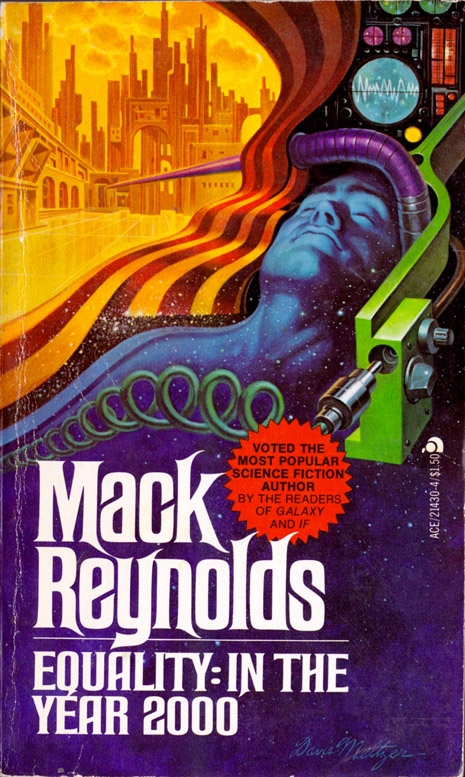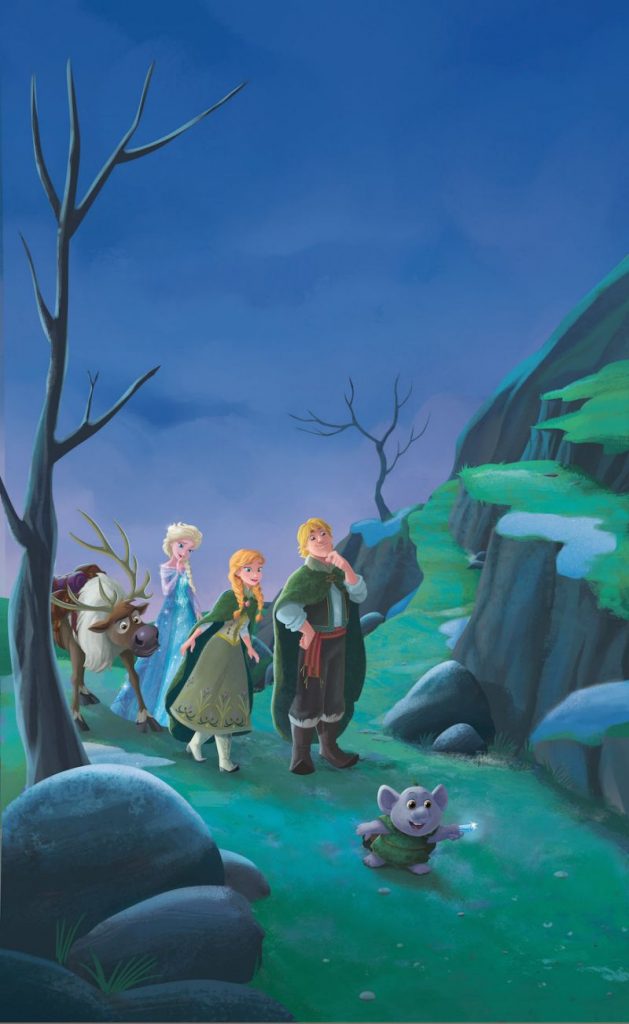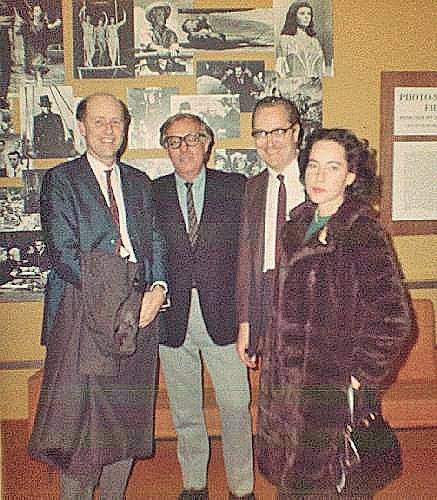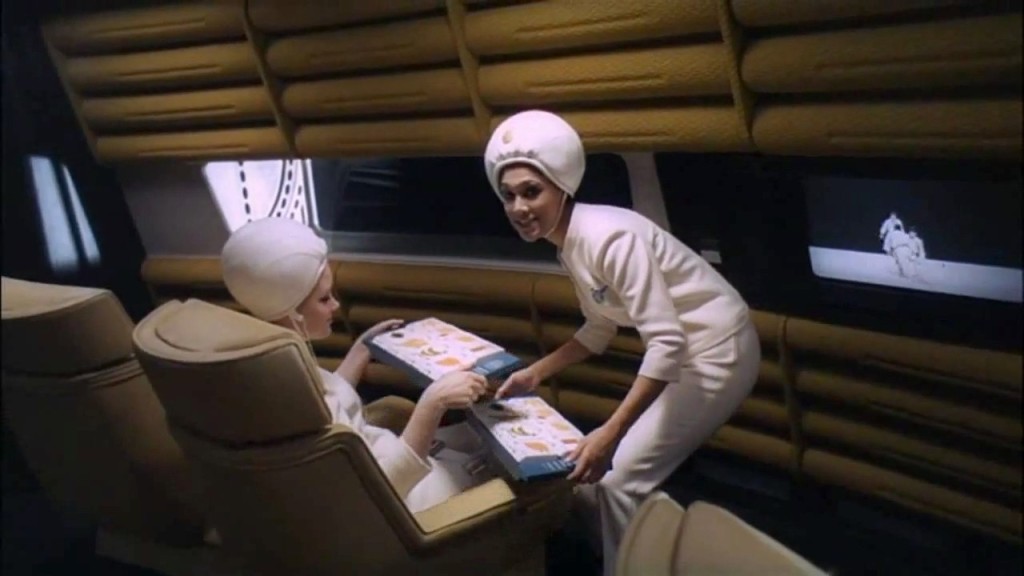(1) Oscar handicappers have The Martian running second for Best Picture says Variety.
In the Oscar race for best picture, “The Martian” has taken off like a rocket among the predictions by media experts at Gold Derby. One month ago, it wasn’t even in the top 10, but now it’s tied for second place with “Joy,” both sharing 17 to 2 odds. “Spotlight” remains out front and has picked up support as it debuts in theaters.
(2) J. K. Rowling tweeted her favorite fan art of Sirius and James Potter:
https://twitter.com/lilymydeer/status/653257716232757248
(3) Auditioning to be the next Doctor?
(4) “Future’s Past: The astronauts of 2001: A Space Odyssey“ at The Space Review covers actors Keir Dullea’s and Gary Lockwood’s appearance at Dragon Con.
Lockwood also said that they got to meet the Apollo 11 crew, and then he paused and said, “I liked Neil… I don’t like Buzz.” He added that often when he and Dullea do joint appearances at film showings, somehow Buzz Aldrin always seems to appear and people want to introduce Aldrin to him. Lockwood drolly replies that he already knows the moonwalker. He implied that he had a similar low opinion of William Shatner, with whom he appeared in the second television pilot for Star Trek.
Lockwood also told a great story about working on the centrifuge set, which he thought was brilliantly designed. He joked that he realized that Kubrick hired him for the job because of his previous experience as a cowboy stuntman. One day Lockwood found himself strapped into his chair, eating goop from his food tray—upside down. Keir Dullea was supposed to climb down the ladder at the center of the set and then the whole set would rotate as he walked over to where Lockwood was sitting. Kubrick called “action” and told Lockwood to take a bite, and Lockwood then watched as the three squares of goop slowly peeled off his tray… and fell nearly 70 feet to the floor below, splattering everything on the pristine white set. They didn’t shoot for the rest of the day.
The actors took some questions from the audience and had some really interesting answers. For instance, somebody asked if they knew that the film would be a classic. Dullea said that he had his doubts because the early reviews were so poor. In particular, he mentioned New Yorker film critic Pauline Kael’s infamous devastating review, where she referred to 2001 as “trash masquerading as art” and “monumentally unimaginative.” Kael later recanted upon seeing the film a second time, but 2001 received numerous other lackluster and even harsh reviews. Considering that 2001 was released way behind schedule and over budget, expectations had been high, and presumably many critics were waiting to pounce.
(5) Entertainment Weekly has the good word — “Mystery Science Theater 3000 Is Returning”.
Next year, TV viewers will be able to relive all manner of classic ’90s shows, with new episodes of The X-Files, Twin Peaks, Gilmore Girls, and Full House on the horizon. Add one more returning series to that list, as Joel Hodgson is announcing Tuesday that his beloved cult creation Mystery Science Theater 3000 is coming back after 15 years of dormancy.
For those unaware, the premise of Mystery Science Theater 3000 is brilliantly simple: A mad scientist has launched a man into space, and he torments said subject with psychological experiments that involve him watching some of the worst movies ever made. In order to keep it together, the poor marooned host talks back at the screen, aided by a pair of pop culture-obsessed robots. The MST3K crew may not have invented talking back to the screen, but they certainly brought it to the masses.
(6) Gray Rinehart finds connections between running for local office and his experience as a Hugo nominee in “Political Lessons and… the Hugo Awards?”
I ran for elective office this year, and lost. (For the record, I spent about 0.41% of the total that all four candidates in my district spent up until the election, and I got 3.5% of the vote. Not close to winning, but a good return on my meager investment.)
I was also nominated for a Hugo Award this year, and lost. The story behind that has been chronicled on this blog and elsewhere, and I won’t go into it in this post. (For the record, and as nearly as I can tell from trying to figure out the preferential voting numbers, about 9% of the 5100 novelette voters selected my story as their first choice. I ended up in fourth place . . . two spots below “No Award.”)
I introduce the fact of my being on political and literary ballots this year because I observed two things in the recent Town Council election process that seem pertinent to this year’s Hugo Awards. Specifically, that the political parties inserted themselves deeply into what was supposed to be a nonpartisan race, and other players also wielded considerable influence; and that a lot of voter information was readily available for the candidates to use.
A lot of food for thought. Among Rinehart’s many points:
And as long as we divide ourselves, or in the case of fandom subdivide ourselves; as long as we separate ourselves into (virtual or actual) walled-off enclaves and echo chambers, and associate only with those who look like us, act like us, and believe the things we do; we will find it harder to understand, relate to, and get along with one another — in civil life as well as in the SF&F community.
I think we would be well-served as a fannish community if we talked more about what we love and why we love it, without implying that those who do not love it as we do are ignorant or contemptible. And I think we would be better off if we recalled another RAH observation, also from Friday (emphasis in original): “Sick cultures show a complex of symptoms . . . but a dying culture invariably exhibits personal rudeness. Bad manners. Lack of consideration for others in minor matters. A loss of politeness, of gentle manners, is more significant than is a riot.”
(7) A fascinating installment of Robert W. Weinberg’s memoirs published by Tangent Online in 2011, “Collecting Fantasy Art #5: Lail, It Rhymes With Gail”
Six months later, Victor grew tired of the Freas and traded it to me. The impossible had happened. So much for my predictions. I now owned the original cover paintings for the first and second serial installments of Robert Heinlein’s novel, The Door Into Summer. Immediately, I contacted Al, the guy I had met at the 1976 World SF Convention in Kansas City, to see if he still owned the third and final cover painting for the serial. I had passed on that cover, though it had been priced cheap, because I had felt certain at the time I would never obtain the second cover painting for the novel. Now that I had that piece, I really wanted the third cover so I would have all three paintings for the novel.
No such luck. Al had sold the Freas painting at the convention. He didn’t remember who bought it, and he didn’t even remember how much they had paid for it. The painting was long gone. I had had a chance to buy it back in Kansas City and had passed it by.
I learned my lesson that day. Only too well. Never pass up a painting of minor importance because someday that minor meaning might explode. It was a difficult lesson to learn, but an important one. It’s one I have never forgotten.
(8) No other writer handles one-star reviews this badly. “British Writer Tracks Down Teen Who Gave His Book a Bad Review, Smashes Her With Wine Bottle” at Gawker.
A 28-year-old British man, most notable for his 2006 victory on the quiz show Countdown, tracked down a Scottish teenager who’d written a negative review of his self-published novel and shattered a bottle of wine on the back of her head. The aspiring author pleaded guilty to the 2014 assault in a Scottish court Monday, the Mirror reported.
Brittain claimed the early reception for The World Rose was strong, blogging that “The praise I received was remarkable and made me feel great; I was compared to Dickens, Shakespeare, Rowling, Raymond E Feist and Nora Roberts.”
…But he also complained about bad reviews from “idiots” and “teenagers.”
One of those teenagers was Paige Rolland, the eventual victim of Brittain’s savage bottle attack. Her entire harsh (but fair) review has been preserved on Amazon, but this passage really sums up her criticism:
As a reader, I’m bored out of my skull and severely disappointed in what I might have paid for. As a writer (albeit an amateur one) I’m appalled that anyone would think this was worthy of money.
Not only does it begin with “once upon a time” which you could argue is perfect as this is a fairytale (and it doesn’t work, it’s incredibly pretentious), but it’s filled with many writing no-nos. Way too much telling, pretentious prose, and a main character that I already hate. Ella is the perfect princess (true to fairytales, so we can at least give him a little credit despite how painfully annoying this is coupled with a complete lack of real personality shining through).
Rolland also noted that Brittain “has gained a bit of infamy on Wattpad where he’s known for threatening users who don’t praise him (pray for me),” which turned out to be quite portentous.
(9) Here’s a word I’m betting you haven’t in your NaNoWriMo novel yet.
(10) Strange poll.
It’s a perennial question. I remember at the 1995 Lunacon that Mordechai Housman, an Orthodox Jew, was having fun circulating copies of his provocative article Hitler’s Crib, which tries to determine whether religious law would permit time travel and, specifically, whether it would permit traveling in time to kill Hitler.
(11) You know this guy: “Plane” at The Oatmeal.
(12) Today In History
- November 10, 1969 – Sesame Street debuts.
- November 10, 1969 — Gene Autry received a gold record for the single, Rudolph the Red-Nosed Reindeer, 20 years after its release.
(13) Today’s Birthday Boy
- November 10, 1960 – Neil Gaiman
(14) James Whitbrook presents “The 7 Least Subtle Political Allegories on Doctor Who“. His pick at number one (most lacking in subtlety) is “The Happiness Patrol.”
But it’s the despot herself who is the most obvious pastiche. Sheila Hancock openly plays the leader Helen A as a satirical take on then-Conservative Prime Minister Margaret Thatcher, the “Iron Lady” who dominated British politics. At the time, this barely made ripples, but a 2010 story in the British newspaper The Sunday Times about the connection—featuring a quote from Sylvester McCoy describing Mrs. Thatcher as “more terrifying than any monster the Doctor had encountered”—saw Conservative politicians in uproar at the anti-Conservative bias this revealed on the part of the BBC. Ex-script editor Andrew Cartmel was brought onto the BBC news program Newsnight to answer claims that the 1980s Doctor Who creative team had been a source of left-wing propaganda in the wake of the “revelation”… despite the story having been no particular secret, 22 years earlier.
Always remember – science fiction is never about the future….
(15) A previously unpublished Leigh Brackett story is one of the lures to buy Haffner Press’ tribute book, Leigh Brackett Centennial.
SF and mystery author Leigh Brackett (1915-1978) – who also wrote screenplays for The Big Sleep, Rio Bravo and The Empire Strikes Back —?is represented by an array of nonfiction pieces by and about here, as well as the previously unpublished story “They,” which Haffner describes as “a mature science fiction tale of power and intrigue, of homegrown xenophobia versus stellar exploration, with an answer to the ultimate question: ‘Are we alone?’” The volume collects the majority of Brackett’s nonfiction writings, supplemented with vintage interviews and commentaries/remembrances from such luminaries as Ray Bradbury, Michael Moorcock, Richard A. Lupoff and more.
Brackett writes of bringing Philip Marlowe into the 1970s for Robert Altman’s The Long Goodbye in “From The Big Sleep to The Long Goodbye and More or Less How We Got There.”
SF-author and NASA employee Joseph Green records the time he hosted Brackett at the launch of Apollo XII . . .
Midwest bookseller Ray Walsh documents the day he escorted Brackett to view a new groundbreaking space-fantasy film in the summer 1977…
Order the book at this link: http://www.haffnerpress.com/book/lb100/
(16) John Scalzi gives his take on balancing awards and mental health:
I’ve won and lost enough awards to know an award is not The Thing That Changes Everything. An award is fun, an award is nice, an award may even be, at times, significant. But at the end of the day, whether you win or lose, you still go home with yourself, and you don’t change — at least, not because of an award. It’s perfectly fine to want an award (I’ve wanted them from time to time, you can be assured) and it’s perfectly okay to be disappointed if you don’t get one. But ultimately, putting the responsibility for your happiness onto an award, which is, generally speaking, a thing over which you have absolutely no control, is a very fine way to become unhappy. Which will not be on the award, or any of the people who voted for it. It will be on you, whether you want to own that fact or not.
(17) Luna Lindsey reviews two competing online tools in “Panlexicon vs. Visual Thesaurus — Who Will Win?” at the SFWA Blog.
I kept Visual Thesaurus on retainer as my go-to onomasticon until I stumbled upon Panlexicon.com in all of its simple, elegant magic.
The power of Panlexicon lies in its ability to search on multiple terms, which will bring up a larger spectrum of metonyms than most thesauri (including Visual Thesaurus). So it’s perfect for finding that just-out-of-reach expression when all you can remember are remotely-related numinous approximations of what you’re going for. Simply type two or more related words or phrases, separated by a comma, and voilà. (And of course, you can always search a standalone word.)
[Thanks to Martin Morse Wooster, Will R., Mark-kitteh, Andrew Porter, John King Tarpinian, and Jim Meadows for some of these stories. Title credit goes to File 770 contributing editor of the day Soon Lee.]















